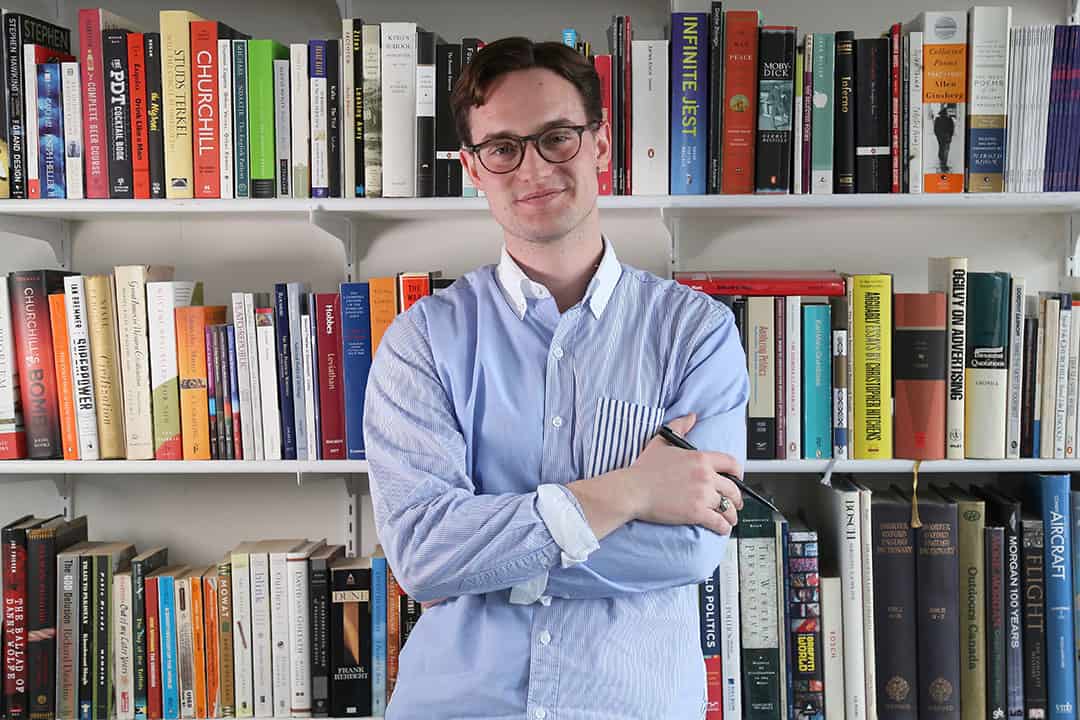This January, The Varsity was faced with news of an existential threat. As the provincial government announced that it was going to strip student groups like ours of privileged status as a mandatory student fee, we had little choice but to do what we do best: report the news, boldly.
That day, the work of Varsity reporters and editors embodied the very spirit of what was at risk. Our reporters publicly pushed a provincial cabinet minister for answers. Our editors made news appearances to speak on the effect that the policy would have on the student press in the province. Each journalist played a part as if in a well-oiled machine, thrumming to fulfil our mandate of furthering discourse on issues that matter to students.
This year, The Varsity as an organization has been the largest in recent history. Emboldened by funds from a levy increase, we followed through with our campaign commitments by hiring editors dedicated to covering issues at UTM and UTSC, as well as broadening the scope of our coverage to include our new graduate membership. Even a cursory scan of our pages will reveal the substantial progress we’ve made in covering these communities. Volume 139 was, broadly, characterized by expansion. This year we launched a Business section, renovated our office space to accommodate a podcast studio, which became home to Bazaar and (Un)Spoken, and created The Squirrel, a student life blog. We also rejoined the Canadian University Press, a national cooperative of student newspapers, after a long absence.
As for output, we crossed the one million pageview mark in early February and have clocked more than 1.4 million pageviews since May 1, 2018 from around 1,100 articles published on thevarsity.ca.
Much has been done, and there’s still much to do, but those stories are for future editors and future letters.
Producing a newspaper is a team sport, and I’ve been fortunate to enjoy the company of a most talented group. By March 31, 484 people contributed to The Varsity, of which 141 are staff. I am grateful to each and every one of them, but particularly thankful to a few. Reut Cohen acted as my rock and foil this year, and she is responsible for all of the good decisions and none of the bad ones. Kaitlyn Simpson led an expansive online team to launch a new platform and improve existing ones, always with a view to the future. Pearl Cao oversaw a stunning brand redesign of our print newspaper with creative force and reset our standards by finishing production earlier than ever on Sundays. The News team, led by Josie Kao and Ilya Bañares, was a point of pride for us, responding to protests, crises, and tragedies stalwartly and with inexorable curiosity — seeing them work reminded me of why I fell in love with journalism. Thanks are also owed to my predecessors. Jacob Lorinc taught me that even though the work we do here is the rough draft of history, it should still be strong and stylish copy. Alex McKeen reminded me that, ultimately, it’s people who are at the heart of this newspaper.
While The Varsity is ending its 139th volume on a high note, it’s impossible to ignore the threats facing this organization. Premier Doug Ford’s Student Choice Initiative will give U of T students the option of whether or not to not pay The Varsity’s fee, which has historically been mandatory. The logic is that incidental fees that fund groups like The Varsity do not provide a universal service to the student body, and as such should be optional. I vehemently disagree. From holding student unions and the university accountable to providing a platform for students’ stories that would otherwise go uncovered, this newspaper has a real, meaningful, and intrinsic value on campus. Moreover, this attempt to corporatize student associations puts traditional media organizations like The Varsity — which have been mostly isolated from the economic pitfalls of print media by our reliable student fee funding — up against a wall.
The student press isn’t just under pressure from this provincial mandate. This year, there have been concerning developments among local student societies with respect to granting media access to union meetings. Despite troubling incidents this year within the Scarborough Campus Students’ Union and the University of Toronto Graduate Students’ Union, as we progress into Volume 140 of The Varsity, I am hopeful of where our relationship with these two unions stand. Student unions represent thousands of people and control millions of dollars; as such, they should be subject to extreme scrutiny and access to their decision-making meetings should be sine qua non.
Nevertheless, with my successor Josie Kao steering the ship, The Varsity will thrive. Josie brings years of refined news judgment to the role alongside a deep and meaningful passion for making The Varsity open and accessible to readers and staff alike. It’s unclear what exactly the future holds for The Varsity, but I am certain this organization is in the hands of a group of people who will elevate the standards of work here to new heights. The fruits of their labour will bear more than any words of mine ever could.
In the introduction to the first issue of the first volume of The Varsity, published October 7, 1880, our editors made an impassioned case for the importance of a vigorous student press. These were their opening words:
“Whatever element of ambition or audacity lies latent in our programme, it is wholly bound up in the desire that the University of Toronto shall possess the best university paper in America and an unrivalled index of the progress of educational systems.”
And so, in pursuit of the best university newspaper, meaningful journalistic progress in an age and environment where it is under threat, and, above all, stories that tell the truth, boldly:
Press on.
— Jack O. Denton
Editor-in-Chief, Volume CXXXIX


